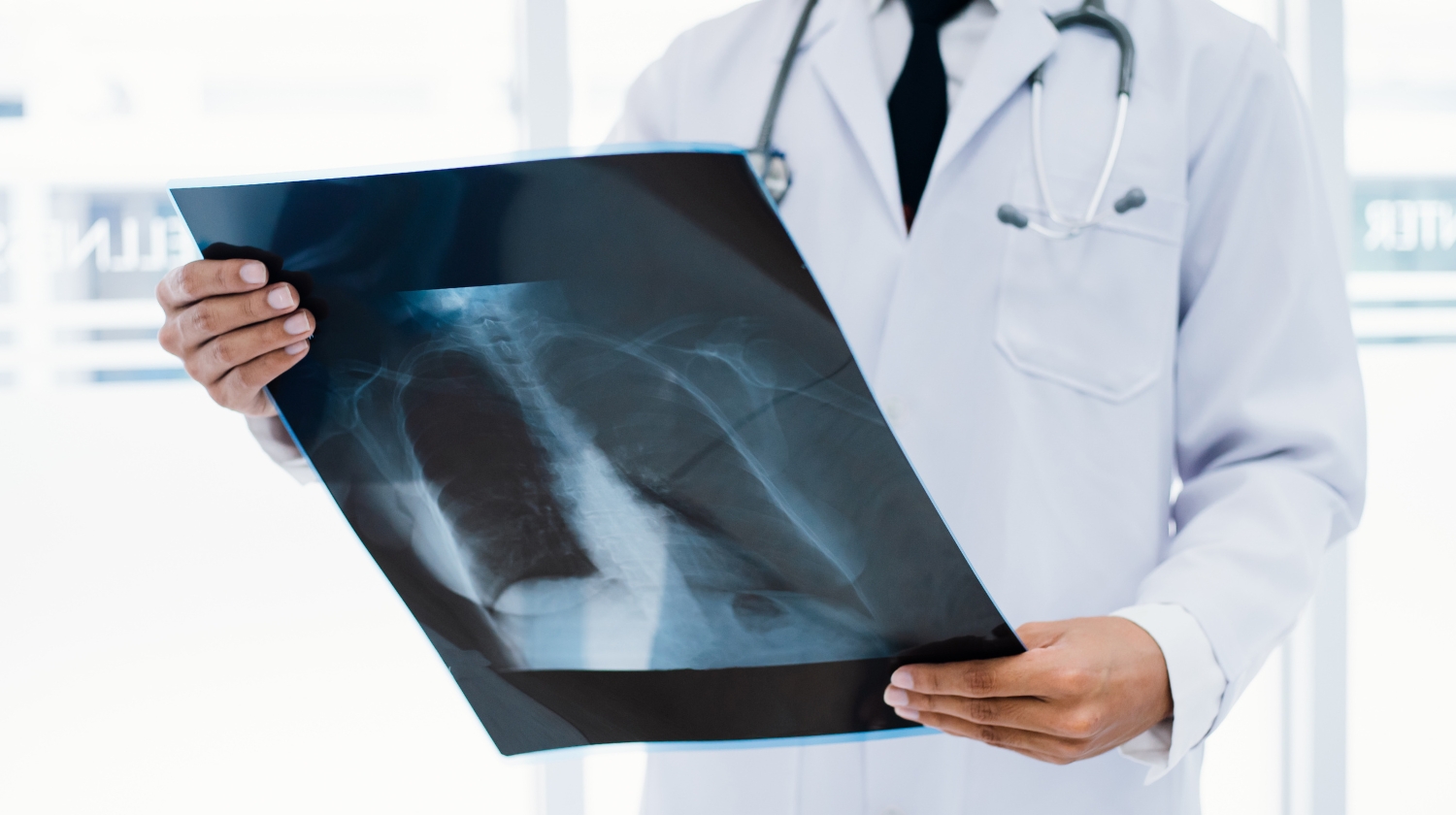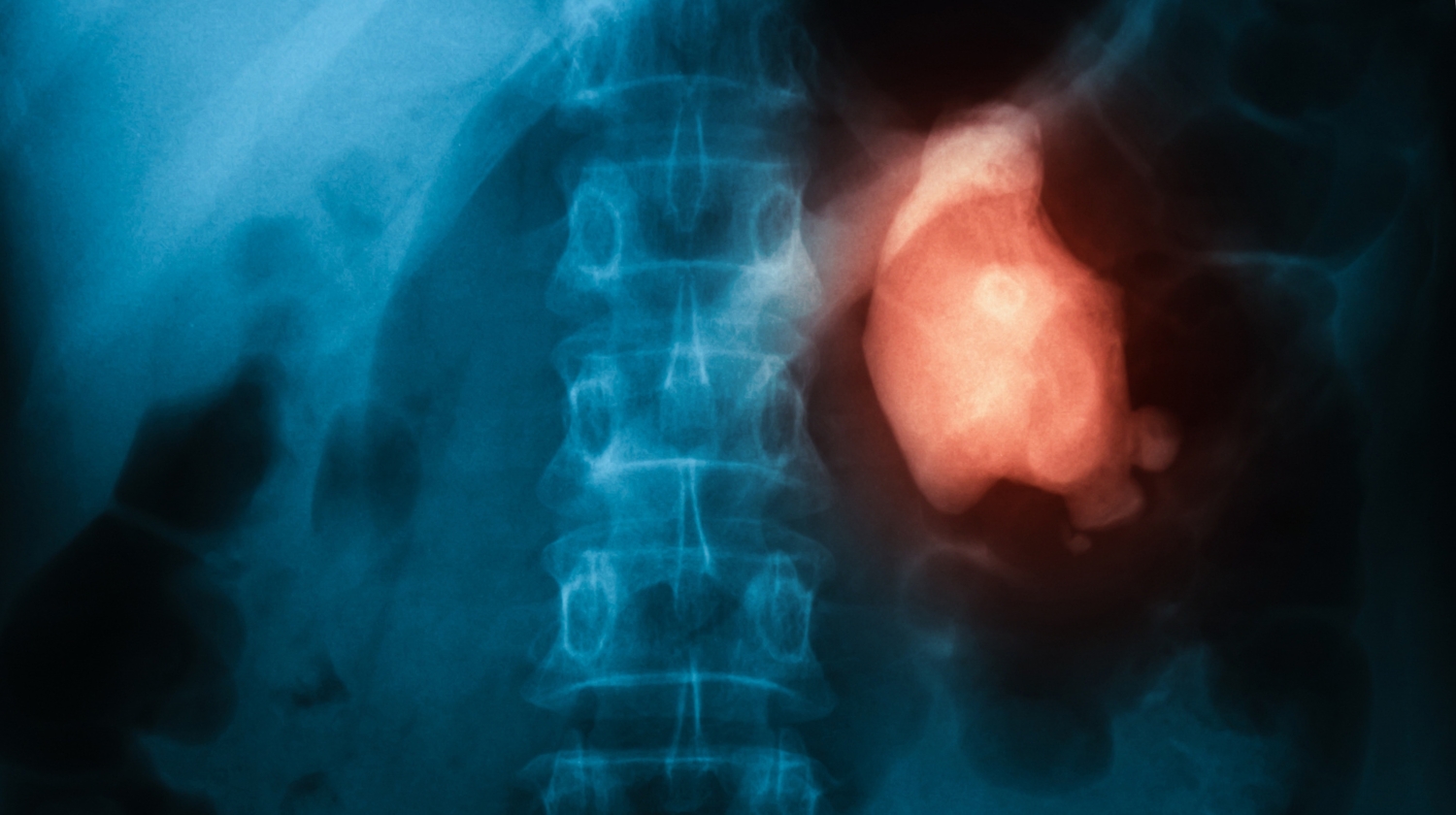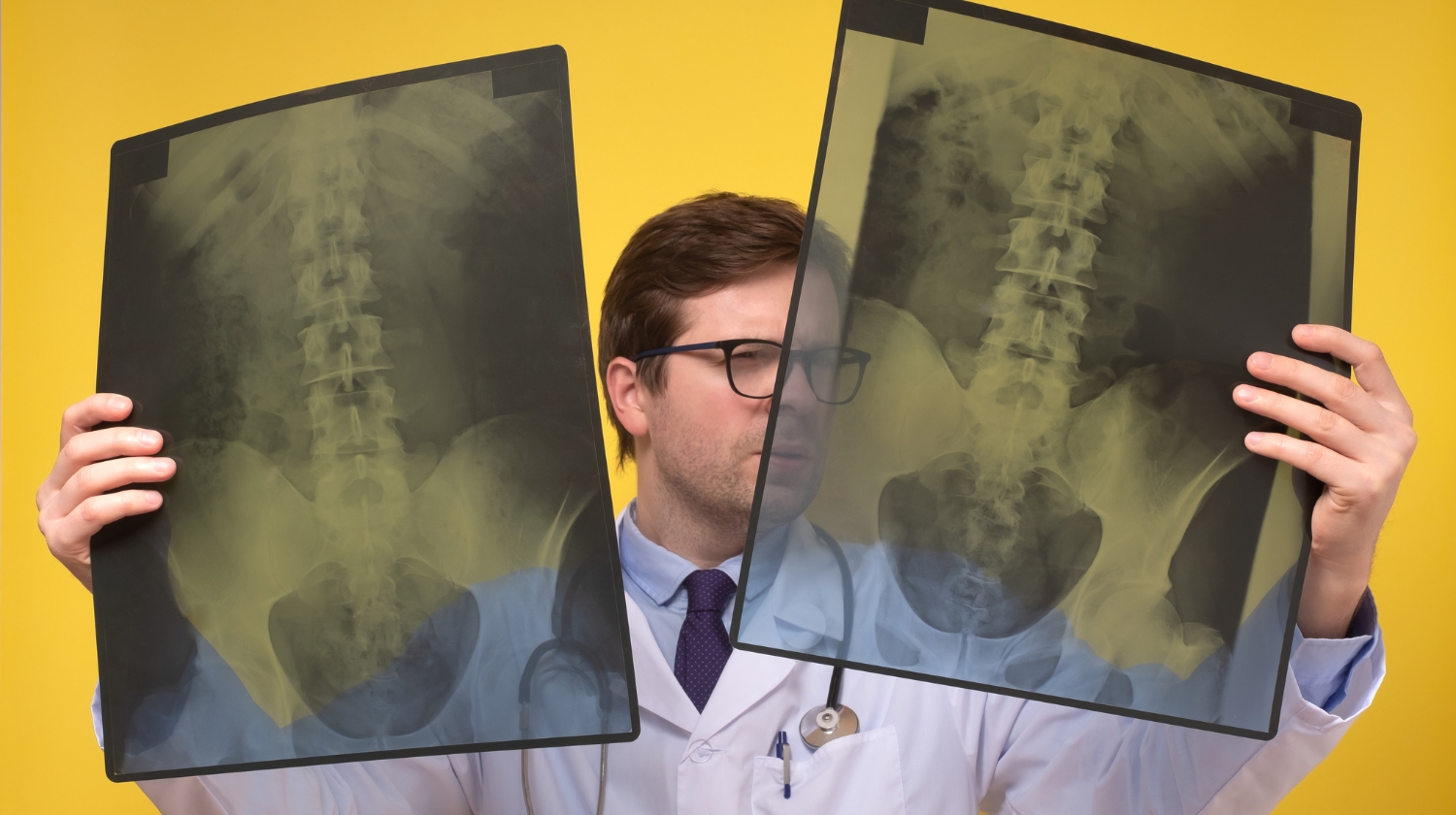 Expert's opinion
Expert's opinion
Expert's opinion
The article is a subjective view on this topic written by writers specializing in medical writing.
It may reflect on a personal journey surrounding struggles with an illness or medical condition, involve product comparisons, diet considerations, or other health-related opinions.
Although the view is entirely that of the writer, it is based on academic experiences and scientific research they have conducted; it is fact-checked by a team of degreed medical experts, and validated by sources attached to the article.
The numbers in parenthesis (1,2,3) will take you to clickable links to related scientific papers.
Kidney Stone & X-Ray: Its Role & Significance In Diagnosis

Kidney stones[1] can be a painful and debilitating condition, requiring accurate diagnosis for appropriate treatment. X-ray imaging techniques, such as plain film X-rays and computed tomography (CT) scans, have revolutionized the field of kidney stone diagnosis. With their ability to provide detailed images of the urinary system, X-rays have become indispensable tools in the hands of healthcare professionals.
In this article, we will explore the role of X-rays[2] in kidney stone diagnosis, examining their effectiveness and limitations compared to other imaging techniques. We will delve into the differences between X-rays and CT scans, as well as the advantages and disadvantages of ultrasound in the diagnosis of kidney stones. By understanding the strengths and weaknesses of each modality, we can gain insights into how healthcare professionals make informed decisions about the most suitable imaging approach for patients.
There are various different kinds of kidney stones including calcium oxalate stone, cystine stones, uric acid stones, struvite stones, and more. If you’re already suffering from kidney stones, you’ll want to check out this article on how to get rid of kidney stones.
Join us as we unravel the mysteries of X-ray imaging in kidney stone diagnosis and discover how these remarkable technologies contribute to better patient outcomes!
Is X-Ray Necessary For Kidney Stone Diagnosis?
While X-rays play a crucial role in identifying kidney stones, their necessity depends on several factors. X-ray imaging techniques, including plain film X-rays or KUB X-rays, are often the initial imaging tests used when a doctor suspects kidney stones. They can detect calcifications associated with kidney stones, especially larger or more densely calcified ones. However, X-rays are less sensitive and may not detect small or non-calcified stones. In cases where a more detailed evaluation is required or when X-rays are inconclusive, a CT scan is highly effective. Ultimately, the choice between X-rays and CT scans depends on stone characteristics, patient symptoms, and the urgency of the situation. Your doctor can help determine which imaging is best for you and order blood tests that may be useful to solve your health concern.

Kidney Stone X-Ray
X-ray imaging techniques, including plain film X-rays and CT scans, are essential for diagnosing kidney stones. They provide detailed images that help identify the presence, location, and size of stones, guiding appropriate treatment strategies. Plain film X-rays, such as KUB X-rays, are commonly used as an initial test but are less sensitive to small or non-calcified stones. CT scans offer higher sensitivity and detail, accurately detecting even small or non-calcified stones. Ultrasound, a non-invasive method, is effective for larger stones and safe for pregnant women and children. Combining ultrasound and X-rays can provide a comprehensive evaluation. The choice of technique depends on stone characteristics and patient considerations. Check out what foods helps repair the kidneys here!
How Is X-Ray Used In Kidney Stone Diagnosis?

X-rays are commonly used in the diagnosis of kidney stones due to their ability to provide detailed images of the urinary system. X-ray imaging techniques, such as a plain film X-ray or a computed tomography (CT) scan, play a crucial role in identifying the presence, location, and size of kidney stones.
A plain film X-ray, also known as a KUB (kidneys, ureters, and bladder) X-ray, is often the first imaging test performed to diagnose kidney stones. It involves taking X-ray images of the abdomen, focusing on the area where the kidneys, ureters, and bladder are located. The images obtained from a KUB X-ray can help identify the presence of kidney stones by detecting the presence of calcifications. However, this technique is not as sensitive as a CT scan and may not detect small or non-calcified stones.
On the other hand, a CT scan is a more advanced and detailed imaging technique used to diagnose kidney stones. It utilizes a series of X-ray images taken from different angles to create cross-sectional images of the urinary system. CT scans can accurately detect even small kidney stones and provide valuable information about their size, location, and composition. This information is crucial for determining the most appropriate treatment approach.
During a CT scan, a contrast dye may be administered to enhance the visibility of the urinary system and improve the detection of stones. The contrast dye helps differentiate the stones from surrounding tissues and provides a clearer image of their characteristics. This aids in determining the type of stone and guides the choice of treatment options.
Both plain film X-rays and CT scans are effective diagnostic tools for kidney stones, but the choice between them depends on various factors, including the suspected size and type of stone, patient symptoms, and the urgency of the situation. CT scans are more sensitive and provide more detailed information, making them particularly useful in complex cases or when the stones are not visible on a plain film X-ray.
In summary, X-ray imaging techniques[3], including plain film X-rays and CT scans, are valuable tools in the diagnosis of kidney stones. They provide detailed images that help identify the presence, location, and size of stones, enabling healthcare professionals to make informed decisions about appropriate treatment strategies for patients with kidney stones.
Kidney Stone X-Ray Vs. CT Scans & Ultrasounds

Vs. CT Scans
When it comes to diagnosing kidney stones, both CT scans[4] and X-rays play important roles, but they have some key differences in terms of their effectiveness and level of detail.
X-rays, specifically plain film X-rays or KUB (kidneys, ureters, and bladder) X-rays, are often the initial imaging test used to diagnose kidney stones. They can detect the presence of calcifications, which are common in kidney stones. However, X-rays are not as sensitive as CT scans and may not detect small or non-calcified stones. Therefore, X-rays are more useful for larger or more densely calcified stones.
On the other hand, CT scans are highly effective in diagnosing kidney stones. They use a series of X-ray images taken from different angles to create detailed cross-sectional images of the urinary system. CT scans can accurately detect even small or non-calcified stones, providing valuable information about their size, location, and composition. This detailed information helps guide treatment decisions and allows healthcare professionals to choose the most appropriate approach for each patient.
Vs. Ultrasounds
Ultrasound[5] and X-rays are both commonly used imaging techniques for diagnosing kidney stones, and each has its advantages and limitations.
Ultrasound is a non-invasive imaging method that uses sound waves to produce real-time images of the body’s internal structures. It is often the initial imaging test used for diagnosing kidney stones. Ultrasound is particularly useful for detecting larger stones and assessing the overall condition of the kidneys and urinary tract. It can provide information about the size, location, and obstruction caused by the stones. Ultrasound is safe, painless, and does not involve exposure to ionizing radiation, making it a preferred option for pregnant women and children.
X-rays, specifically plain film X-rays or KUB (kidneys, ureters, and bladder) X-rays, are another common tool for diagnosing kidney stones. X-rays can detect calcifications and show the presence of larger or more densely calcified stones. However, X-rays are not as sensitive as ultrasound or other imaging techniques when it comes to detecting small or non-calcified stones.
In some cases, both ultrasound and X-rays may be used together to provide a more comprehensive evaluation of kidney stones. For example, if an ultrasound detects a stone, an X-ray may be performed to assess its size and composition.
Conclusion
In conclusion, X-ray imaging techniques, including plain film X-rays and CT scans, are valuable tools in the diagnosis of kidney stones. They provide detailed images that help identify the presence, location, and size of stones, enabling healthcare professionals to make informed decisions about appropriate treatment strategies for patients with kidney stones. Plain film X-rays, such as KUB X-rays, are often the initial imaging test used and can detect calcifications associated with kidney stones.
However, they are less sensitive and may not detect small or non-calcified stones. CT scans, on the other hand, offer higher sensitivity and detail, accurately detecting even small or non-calcified stones and providing crucial information for treatment decisions. Ultrasound, a non-invasive technique using sound waves, is particularly useful for detecting larger stones and assessing overall kidney and urinary tract conditions. It is a preferred option for pregnant women and children due to its safety and lack of radiation exposure. To help prevent kidney stones in the first place read about how much water you should drink per day.
In some cases, a combination of ultrasound and X-rays may be used for a more comprehensive evaluation. The choice of imaging technique depends on factors such as stone size, composition, and patient-specific considerations. If you’re looking for supplements to help prevent kidney stone formation check out best apple cider vinegar gummies and skinnyfit reviews!
+ 5 sources
Health Canal avoids using tertiary references. We have strict sourcing guidelines and rely on peer-reviewed studies, academic researches from medical associations and institutions. To ensure the accuracy of articles in Health Canal, you can read more about the editorial process here
- Fontenelle LF;Sarti TD (2019). Kidney Stones: Treatment and Prevention. American family physician, [online] 99(8). Available at: https://pubmed.ncbi.nlm.nih.gov/30990297/.
- Scherer, K., Braig, E., Willer, K., Willner, M., Fingerle, A.A., Chabior, M., Herzen, J., Matthias Eiber, Haller, B., Straub, M., Schneider, H.E., Rummeny, E.J., Noël, P.B. and Pfeiffer, F. (2015). Non-invasive Differentiation of Kidney Stone Types using X-ray Dark-Field Radiography. [online] 5(1). doi:https://doi.org/10.1038/srep09527.
- Vasudeva, R. (2004). Imaging for kidney stones. [online] 22(5), pp.323–327. doi:https://doi.org/10.1007/s00345-004-0413-0.
- Brisbane, W., Bailey, M. and Sorensen, M. (2016). An overview of kidney stone imaging techniques. [online] 13(11), pp.654–662. doi:https://doi.org/10.1038/nrurol.2016.154.
- Dai, J.C., Bailey, M., Sorensen, M. and Harper, J.D. (2019). Innovations in Ultrasound Technology in the Management of Kidney Stones. [online] 46(2), pp.273–285. doi:https://doi.org/10.1016/j.ucl.2018.12.009.



